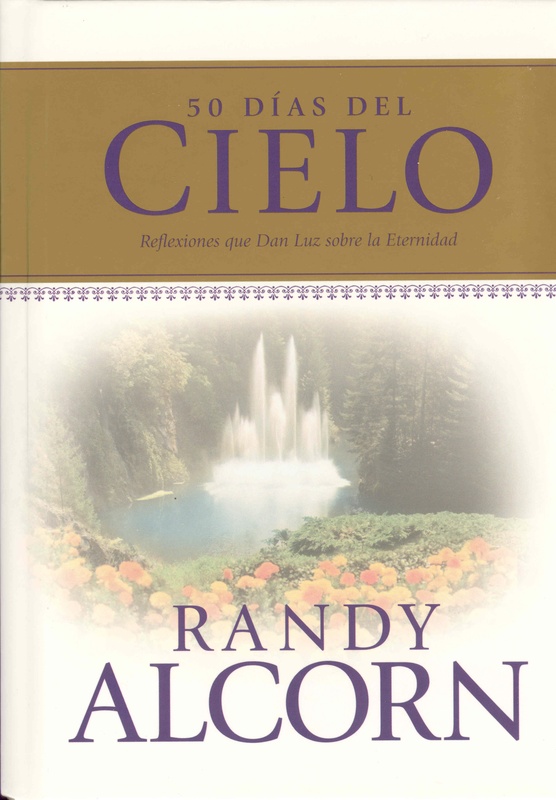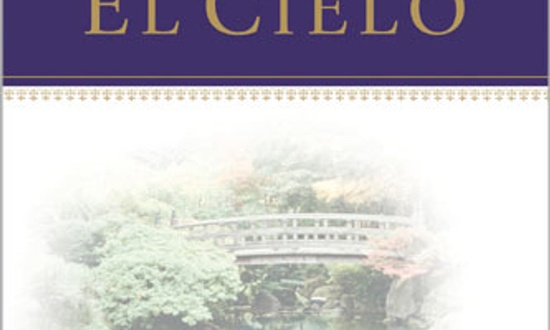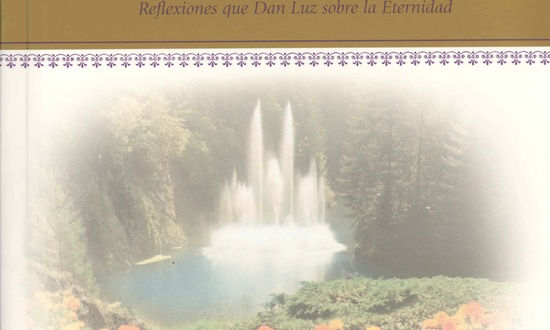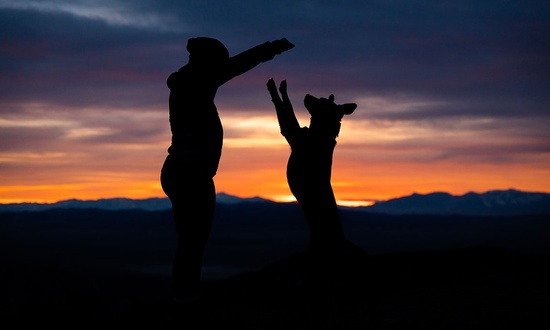Yo establezco mi pacto con ustedes, con sus descendientes, y con todos los seres vivientes que están con ustedes, es decir, con todos los seres vivientes de la tierra que salieron del arca: las aves, y los animales domésticos y salvajes. — Génesis 9:9-10
Toda la creación bruta entonces, sin duda, será restaurada, no sólo al vigor, fortaleza y velocidad que tuvieron en su creación, sino a un grado mucho más alto del que jamás disfrutaron.— John Wesley
Isaías 11:6-9 habla de un tiempo glorioso en la Tierra:
El lobo vivirá con el cordero, el leopardo se echará con el cabrito, y juntos andarán el ternero y el cachorro de león, y un niño pequeño los guiará. La vaca pastará con la osa, sus crías se echarán juntas, y el león comerá paja como el buey. Jugará el niño de pecho junto a la cueva de la cobra, y el recién destetado meterá la mano en el nido de la víbora. No harán ningún daño ni estrago en todo mi monte santo, porque rebosará la tierra con el conocimiento del Señor como rebosa el mar con las aguas.
Algunos intérpretes restringen este pasaje al Milenio, pero Isaías anticipa un reino de Dios eterno en la Tierra. Isaías 65:17 y 66:22 hablan específicamente de la Nueva Tierra. Entremedio de estos pasajes, en Isaías 65:25, hay una referencia muy similar a la que se encuentra en Isaías 11: “‘El lobo y el cordero pacerán juntos; el león comerá paja como el buey. . . . En todo mi monte santo no habrá quien haga daño ni destruya,’ dice el Señor.”
¿Cuándo no habrá más daño en la Tierra? No en la primera Tierra, ni siquiera durante el Milenio, el cual terminará en rebelión, guerra, juicio y muerte. Sólo en la Nueva Tierra no habrá más daño. Por cierto que Dios nos dice que no habrá más pecado, muerte o sufrimiento (Apocalipsis 21:4). Estas descripciones de animales habitando pacíficamente la Tierra pueden tener una aplicación a un reino del Milenio en la primera Tierra, pero su referencia primaria parece ser al reino eterno de Dios, en el cual los hombres y los animales disfrutarán de una Tierra redimida.
¿Cuál fue el diseño original de Dios para la Tierra? No necesitamos formularnos preguntas. “Dios hizo los animales domésticos, los animales salvajes, y todos los reptiles, según su especie. Y Dios consideró que esto era bueno” (Génesis 1:25).
“Entonces Dios el Señor formó de la tierra toda ave del cielo y todo animal del campo” (Génesis 2:19). Sólo los seres humanos y los animales fueron formados de la tierra. Dios los hizo a mano, vinculándonos a la Tierra y los unos a los otros.
Cuando Dios sopló hálito de vida en el cuerpo de Adán, el cual había sido formado de la tierra, Adán se convirtió en nephesh, “un ser viviente” (Génesis 2:7). Notablemente, la misma palabra, nephesh, se usa para los animales, al igual que se usa para la gente—a ambos se les da el hálito de vida (Génesis 1:30; 2:7; 6:17; 7:15, 22). La palabra nephesh se traduce a menudo como “ser viviente” o “alma.” Nephesh incluye el principio vivificante que Dios pone en los cuerpos de los animales y de los seres humanos.
No me entienda mal. Los seres humanos y los animales son muy diferentes, y en ningún sentido son iguales. El punto es simplemente que compartimos similitudes significantes como seres vivientes creados por Dios. La parte inmaterial de los seres humanos continúa viviendo después de la muerte, mientras que en los animales tal vez no. (Por supuesto que esto no impediría que Dios recreara a los animales si quisiera hacerlo.) Sin embargo, para hacerle justicia a las Escrituras, debemos reconocer que de la gente y de los animales se dice algo único—son seres vivientes. El hecho de que Dios tiene un plan futuro para ambos, la humanidad y la Tierra, sugiere con firmeza que él también tiene un plan futuro para los animales. Las palabras de Dios a Noé en referencia a la primera “nueva tierra” (después del diluvio), apoyan esta idea:
“Haz que entre en el arca una pareja de todos los seres viviente, es decir, un macho y una hembra de cada especie, para que sobrevivan contigo. Contigo entrará también una pareja de cada especie de aves, de ganado y de reptiles, para que puedan sobrevivir” (Génesis 6:19-20).
Los animales fueron dados como compañeros y ayudantes del hombre, y los seres humanos debían gobernar a los animales con bondad. Dios no sólo preservó a los animales del Diluvio, sino que notablemente, también los incluyó en su nuevo pacto. Fíjese en el énfasis repetido en los animales:
“‘Yo establezco mi pacto con ustedes, con sus descendientes, y con todos los seres vivientes que están con ustedes, es decir, con todos los seres vivientes de la tierra que salieron del arca: las aves, y los animales domésticos y salvajes . . . nunca más habrá un diluvio que destruya la tierra.’
“Y Dios añadió: ‘Ésta es la señal del pacto que establezco para siempre con ustedes y con todos los seres vivientes que los acompañan. . . . Me acordaré del pacto que he establecido con ustedes y con todos los seres vivientes. . . . Cada vez que aparezca el arco iris entre las nubes, yo lo veré y me acordaré del pacto que establecí para siempre con todos los seres vivientes que hay sobre la tierra.’ Dios concluyó diciéndole a Noé: ‘Éste es el pacto que establezco con todos los seres vivientes que hay en la tierra’” (Génesis 9:9-17, itálicas añadidas).
El plan de Dios para una Tierra renovada después del Diluvio enfáticamente involucra a los animales. De igual forma, ¿no esperaríamos que su plan para una Tierra renovada después del futuro juicio incluyera a los animales?
En 2 Pedro 3:5-7, vemos un paralelo directo entre el juicio pasado de Dios con agua sobre la Tierra y su juicio futuro con fuego. La humanidad fue juzgada en el Diluvio, pero Dios no limitó su rescate a la gente; también rescató a representantes de cada especie animal para que poblaran la Tierra. Esta es una figura poderosa de lo que declara Romanos 8: que la humanidad y los animales y toda la creación están unidos, no sólo en la maldición y el juicio sino también en la bendición y en la liberación. ¿No deberíamos esperar lo mismo en el venidero juicio por fuego?
Puesto que sabemos que Dios hará la Nueva Tierra con gente renovada y cosas renovadas como el agua, los árboles y la fruta, ¿no deberíamos esperar que él también incluyera animales renovados? La carga de la prueba descansa no en la suposición de que los animales serán parte de la Nueva Tierra de Dios, sino en la suposición de que no serán. ¿Retendría Dios de nosotros en la Nueva Tierra lo que les dio a Adán y Eva en el Edén para su deleite, compañía y ayuda? ¿Revocaría su decisión de colocar animales en la Tierra con la gente, colocándolos bajo nuestro cuidado y gobierno? ¿O seguirá él con su diseño original?
Fíjese hoy en los animales que se cruzan por su camino. Pregúntese: ¿por qué considera el Creador a estas criaturas tan importantes como para incluirlas en su creación original y en las promesas de su pacto?
Señor, la extensión de tu plan redentor sobrepasa la capacidad de nuestra mente. Líbranos de pensar obtusamente, lo cual con mucha rapidez restringe el alcance de tu redención. En forma repetida enfatizaste que tu pacto no fue sólo con los seres humanos sino también con los animales. Ábrenos los ojos para ver la naturaleza de tu obra creativa en los animales, y su conexión esencial con la Tierra y con nosotros. Ayúdanos a anticipar la vida en la Nueva Tierra y a percibir tus atributos y deleites en tus criaturas, de formas mayores que nunca antes.
Animals on the New Earth?
I now establish my covenant with you and with your descendants after you and with every living creature that was with you—the birds, the livestock and all the wild animals, all those that came out of the ark with you—every living creature on earth. — Genesis 9:9-10
The whole brute creation will then, undoubtedly, be restored, not only to the vigour, strength, and swiftness which they had at their creation, but to a far higher degree of each than they ever enjoyed. — John Wesley
Isaiah 11:6-9 speaks of a coming glorious era on Earth:
The wolf will live with the lamb, the leopard will lie down with the goat, the calf and the lion and the yearling together; and a little child will lead them. The cow will feed with the bear, their young will lie down together, and the lion will eat straw like the ox. The infant will play near the hole of the cobra, and the young child put his hand into the viper’s nest. They will neither harm nor destroy on all my holy mountain, for the earth will be full of the knowledge of the Lord as the waters cover the sea.
Some interpreters restrict this passage to the Millennium, but Isaiah anticipates an eternal Kingdom of God on Earth. Isaiah 65:17 and 66:22 specifically refer to the New Earth. Sandwiched in between, in Isaiah 65:25, is a reference very similar to that in Isaiah 11: “ ‘The wolf and the lamb will feed together, and the lion will eat straw like the ox. . . . They will neither harm nor destroy on all my holy mountain,’ says the Lord.”
When will there be no more harm on the earth? Not on the old Earth. Not even during the Millennium, which will end in rebellion, warfare, judgment, and death. Only on the New Earth will there be no more harm. Indeed, God tells us, there will be no more death, mourning, or pain there (Revelation 21:4). These descriptions of animals peacefully inhabiting the earth may have application to a millennial kingdom on the old Earth, but their primary reference point seems to be God’s eternal Kingdom, where men and animals will together enjoy a redeemed Earth.
What was God’s original design for the earth? We need not wonder: “God made the wild animals according to their kinds, the livestock according to their kinds, and all the creatures that move along the ground according to their kinds. And God saw that it was good” (Genesis 1:25).
“Now the Lord God had formed out of the ground all the beasts of the field and all the birds of the air” (Genesis 2:19). Only humans and animals were formed from the ground. God handmade them, linking them to the earth and to each other.
When God breathed a spirit into Adam’s body, which was made from the earth, Adam became nephesh,a “living being” (Genesis 2:7). Remarkably, the same word, nephesh,is used for animals, just as it is for people—both are given God’s breath of life (Genesis 1:30; 2:7; 6:17; 7:15, 22). The word nephesh is often translated “living being” or “soul.” Nephesh includes the animating principle that God puts into animal and human bodies.
Don’t misunderstand. Humans and animals are very different, and in no sense are they equal. The point is simply that we do share certain significant similarities as living beings created by God. The immaterial being of humans continues to survive after death, whereas animals may not. (Of course, this wouldn’t prevent God from re-creating the animals if he wants to.) However, to do justice to Scripture, we need to recognize that people and animals are both said to be unique, living beings. The fact that God has a future plan for both mankind and the earth strongly suggests that he also has a future plan for animals. God’s words to Noah regarding the first “new earth” (post-Flood) support this idea:
“You are to bring into the ark two of all living creatures, male and female, to keep them alive with you. Two of every kind of bird, of every kind of animal and of every kind of creature that moves along the ground will come to you to be kept alive” (Genesis 6:19-20).
Animals were given as companions and helpers to mankind, and humans were to rule the animals benevolently. God not only preserved animals from the Flood, he also, remarkably, included them in his new covenant. Notice the repeated emphasis on animals:
“I now establish my covenant with you and with your descendants after you and with every living creature that was with you—the birds, the livestock and all the wild animals, all those that came out of the ark with you—every living creature on earth. . . . Never again will there be a flood to destroy the earth. . . .”
And God said, “This is the sign of the covenant I am making between me and you and every living creature with you, a covenant for all generations to come. . . . I will remember my covenant between me and you and all living creatures of every kind. . . . Whenever the rainbow appears in the clouds, I will see it and remember the everlasting covenant between God and all living creatures of every kind on the earth. . . .”
God said to Noah, “This is the sign of the covenant I have established between me and all life on the earth.” (Genesis 9:9-17, emphasis added)
God’s plan for a renewed Earth after the Flood emphatically involved animals. Wouldn’t we likewise expect his plan for a renewed Earth after the future judgment to include animals?
Second Peter 3:5-7 draws a direct parallel between God’s past judgment of the earth with water and his future judgment with fire. Mankind was judged in the Flood, but God didn’t limit his rescue to people; he also rescued representatives of every animal species to populate the earth. This is a powerful picture of what Romans 8 states: mankind and animals and all creation are linked together not only in curse and judgment but also in blessing and deliverance. Shouldn’t we expect the same in the coming judgment by fire?
Since we know God will fashion the New Earth with renewed people and renewed features of ground and water and trees and fruit, shouldn’t we expect him also to include renewed animals?
The burden of proof falls not on the assumption that animals will be part of God’s New Earth, but on the assumption that they won’t. Would God withhold from us on the New Earth what he gave to Adam and Eve in Eden for delight, companionship, and help? Would he revoke his decision to put animals on Earth with people, placing them under our care and rule? Or will he follow through on his original design?
Look around today at the animals you come across. Ask yourself, why does the Creator consider these creatures important enough to include them in his original creation and his covenant promise?
Lord, the extent of your redemptive plan boggles our minds. Preserve us from our narrow thinking, which is so quick to limit and restrict the scope of your redemption. You repeatedly emphasized that your covenant was not just with humans but with animals as well. Open our eyes to see the nature of your creative work in animals, and their essential connection to the earth and to us. Help us to anticipate living on the New Earth and beholding in your creatures your attributes and delights, in greater ways than ever before.
Excerpt from 50 Days of Heaven by Randy Alcorn, Day 30




